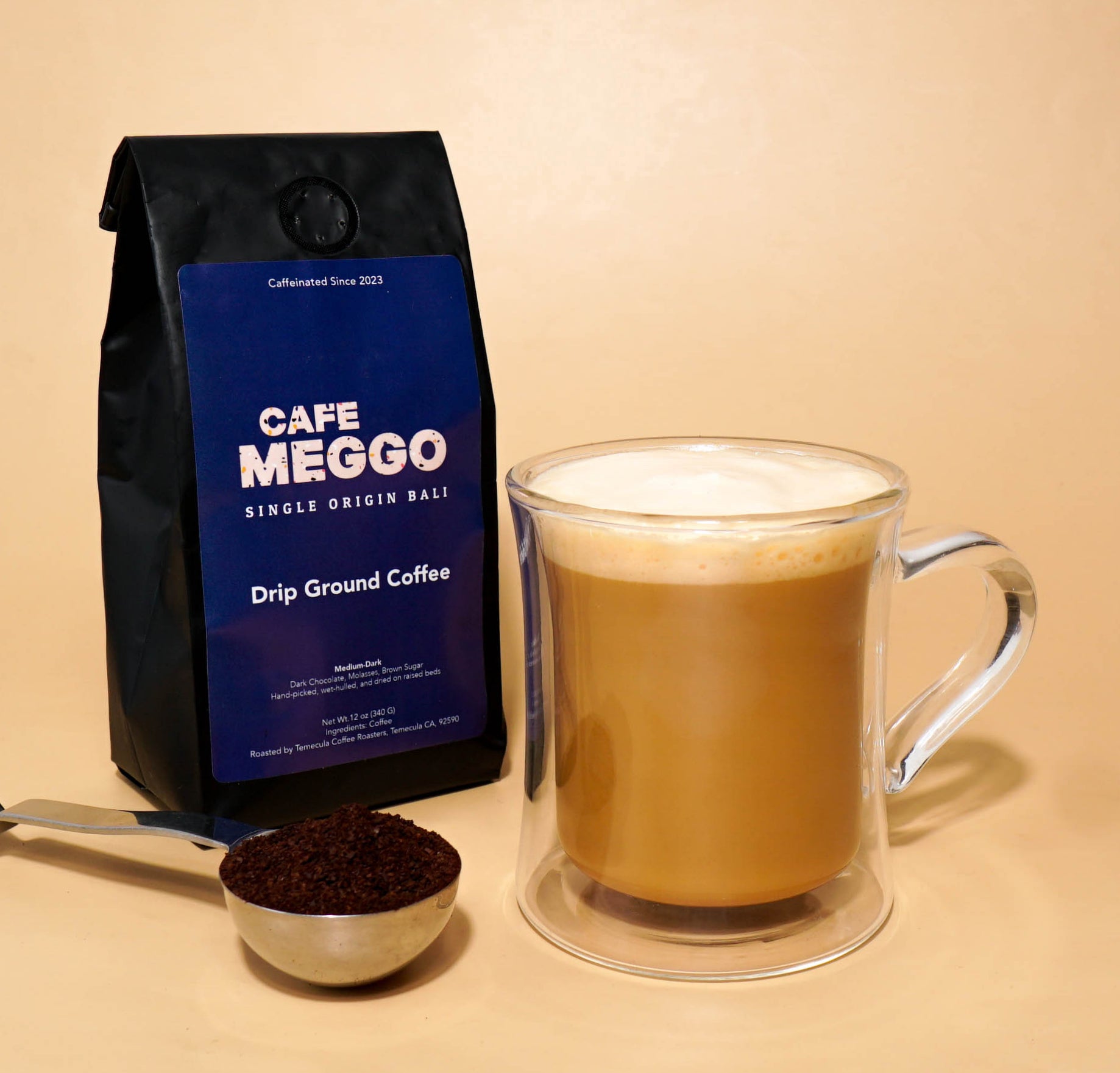Understanding Coffee Beans: the Trip From Coffee to Blended Coffee Beans

The Origins of Coffee: An International Viewpoint
While you could think of coffee as a modern-day staple, its beginnings trace back centuries, intertwining with societies throughout the world. The story begins in Ethiopia, where tale states a goat herder called Kaldi uncovered the energizing impacts of coffee beans after noticing his goats romping vigorously after eating them.
As trade paths expanded, coffee made its method to Europe in the 17th century, promptly acquiring appeal. It transformed from a mystical drink into a day-to-day routine, inspiring gatherings and intellectual exchanges. Each society included its one-of-a-kind spin to coffee prep work, enhancing its history. This global trip highlights how coffee attaches us, transcending borders and uniting varied customs with a straightforward bean.
Farming and Harvesting of Coffee Beans
As coffee's journey progressed, the focus changed to the cultivation and harvesting of specific bean ranges, specifically those used for coffee. You'll find that espresso beans commonly come from Arabica or Robusta plants, each offering unique flavors. The optimal growing conditions consist of high altitudes and abundant, well-drained dirt, which boost the beans' high quality.
Throughout the harvest, choosing techniques differ. In some areas, employees hand-pick ripe cherries, making certain only the most effective fruit goes to processing. In other locations, mechanical farmers are utilized, especially on larger farms. When the cherries get to peak perfection for optimum taste., timing is important; you want to gather.
As soon as harvested, the beans are gotten ready for handling, which is essential in determining their last preference. Understanding the farming and harvesting procedures provides you understanding right into what enters into your favored coffee, enriching your admiration for every mug.
Handling Techniques: From Cherry to Bean
Now that you have actually found out about collecting espresso beans, allow's explore how those cherries transform right into the coffee beans you love. You'll see just how different harvesting strategies impact flavor, adhered to by the necessary actions of fermentation and drying out. We'll break down the milling and grading process that identifies your coffee's high quality.
Gathering Techniques Clarified
When it comes to coffee, comprehending harvesting strategies is vital, because they directly influence the flavor and high quality of the beans you take pleasure in. Careful picking entails hand-picking only ripe cherries, ensuring you get the best high quality beans. Inevitably, the option of gathering technique can considerably affect your coffee experience, so it's worth understanding how those beans made it to your cup.
Fermentation and Drying
After gathering, the following steps in processing coffee beans play a considerable role fit their flavor. You'll locate that fermentation is important, as it helps damage down the mucilage bordering the beans, enhancing their preference account. Relying on the approach, this procedure can last from a few hours to a number of days, with varying results based upon temperature level and moisture.
Once fermentation is complete, drying adheres to, which is just as vital. You can select from sun-drying or mechanical drying techniques. Sun-drying permits the beans to soak up tastes from the environment, while mechanical drying guarantees constant moisture degrees despite climate. Appropriate drying out is necessary to protect against mold and mildew and maintain the beans' top quality, ultimately affecting your cup of coffee.
Milling and Grading Process
As fermentation and drying established the stage for taste advancement, the milling and grading process warranties that only the ideal coffee beans make it to your cup. This phase involves getting rid of the external layers of the coffee cherry, consisting of the parchment and husk. Top notch beans get a greater grade, resulting in a richer coffee experience.
Toasting Strategies: Opening Taste Possible
When you roast coffee beans, the method you select can drastically affect the flavor account. Comprehending the connection between time, temperature level, and roasting strategies is key to revealing the capacity of your brew. Let's explore just how these aspects come together to create the excellent cup.
Toasting Methods Clarified
While you might assume that all coffee roasting approaches produce the same outcomes, the truth is that each method discloses special flavor possibilities in the beans. Drum roasting makes use of a rotating drum to uniformly distribute warm, boosting caramelization and creating a well balanced flavor. Air roasting, on the various other hand, distributes hot air around the beans, promoting a lighter roast with noticable acidity.

Effect On Flavor Account
Different roasting methods not just influence the procedure but likewise considerably affect the taste profile of the coffee beans. Dark roasts, on the other hand, bring out bold, great smoky tastes, sometimes concealing the bean's special features. Recognizing these subtleties aids you value the creativity behind your cup of coffee, improving your total experience with every sip.
Time and Temperature Level Factors
To release the complete taste potential of coffee beans, both time and temperature during the toasting procedure play considerable functions. When roasting, you'll locate that higher temperatures can quickly create tastes, however if you rush it, you could wind up with scorched notes. Alternatively, reduced temperature levels permit a more gradual flavor advancement, showcasing the beans' special features.

Timing is equally as essential; prolonging the roast as well long can result in a loss of acidity and brightness, while also short a roast could leave the beans underdeveloped. Discovering that sweet place needs technique and trial and error. By changing these variables, you can expose the abundant, intricate flavors hidden within each bean, developing an absolutely exceptional coffee experience.
The Art of Blending: Crafting Unique Coffee Accounts

Start by choosing a base coffee that provides a solid foundation. After that, pick complementary beans to boost particular flavor notes. For instance, a brilliant Ethiopian bean can bring fruitiness, while an abundant Brazilian coffee adds body. Testing is vital-- do not hesitate to change proportions until you find your excellent profile.
As you mix, remember that each mix tells a story. You're not just making coffee; you're producing an experience. Take your time, preference frequently, and appreciate the journey of finding your trademark mix - Single Origin Espresso.
Developing Methods: How Preparation Impacts Flavor
Blending coffee opens up a domain name of taste possibilities, but how you brew that blend can substantially influence your last mug. Various developing methods extract special flavors and fragrances, so it's vital to pick wisely. A French press allows oils and debris to stay, creating a rich, robust experience. On the other hand, a pour-over highlights the coffee's quality and brightness, ideal for showcasing delicate notes.
Coffee, with its high pressure, generates a concentrated shot that accentuates sweet taste and crema. If you choose a lighter mixture, think about a chilly mixture technique; it produces a smooth, less acidic preference.
Changing variables like water temperature, grind dimension, and brew time can change your coffee's profile. Accept the art of developing to find the tastes hidden in your coffee blends.
The Future of Coffee: Sustainability and Technology
As the coffee industry advances, sustainability and development are coming to be crucial for resolving environmental challenges and meeting customer demands. You'll see that more coffee business are adopting environmentally friendly techniques, from sourcing beans fairly to carrying out lasting farming techniques. These changes not only aid the world yet also improve the top quality of the coffee you enjoy.
You may see advancements like biodegradable product packaging and water-saving developing techniques that lower waste. Advanced innovation, such as blockchain, is additionally becoming popular, guaranteeing transparency in the supply chain, which allows you to trace your coffee back to its origins.
In enhancement, purchasing local communities and supporting farmers through reasonable profession initiatives promotes a more lasting coffee ecosystem. As you drink your next cup, keep in mind that your options can add to a brighter future for coffee. By selecting sustainable brand names, you're not just enjoying a drink; you're making a positive impact on the world.
Often Asked Inquiries
What Is the Difference Between Arabica and Robusta Beans?
Arabica beans are smoother, sweeter, and have a greater acidity, while robusta beans are more powerful, a lot more bitter, and consist of more caffeine. You'll notice these distinctions in taste and scent when brewing your coffee.
Just How Does Altitude Affect Coffee Bean Flavor?
Elevation impacts coffee bean Single Origin Espresso flavor substantially. Greater elevations generate beans with brighter level of acidity and complex tastes, while reduced elevations commonly yield beans that are larger and much less nuanced. You'll notice these distinctions in your cup!
What Are the Health Perks of Drinking Coffee?
Consuming alcohol coffee can increase your power, boost mental emphasis, and even boost physical performance. It's rich in anti-oxidants, may reduce the danger of certain conditions, and can advertise a much healthier metabolic process when eaten in moderation.
Can Coffee Beans Be Recycled for Brewing?
Yes, you can recycle coffee beans for brewing, however the flavor could be weaker. If you enjoy trying out, try recycling them in different methods, like cool mixtures or contributing to smoothie mixes for an added kick.
Exactly how Should I Store Coffee Beans for Freshness?
To maintain your coffee beans fresh, save them in an airtight container in a cool, dark place. Prevent subjecting them to wetness, light, or warmth, as these elements can swiftly degrade their taste and fragrance.
Understanding Coffee Beans: the Trip From Espresso to Blended Coffee Beans.
Now that you have actually learned concerning collecting espresso beans, allow's discover just how those cherries change into the coffee beans you love.When you roast coffee beans, the technique you pick can dramatically impact the flavor profile - Single Origin Espresso.While you may assume that all coffee toasting methods produce the very same outcomes, the fact is that each strategy exposes distinct flavor possibilities in the beans.Different roasting methods not only influence the process yet additionally significantly affect the flavor profile of the coffee beans
Comments on “What Makes SOE Single Origin Espresso Different from Combination Beans”